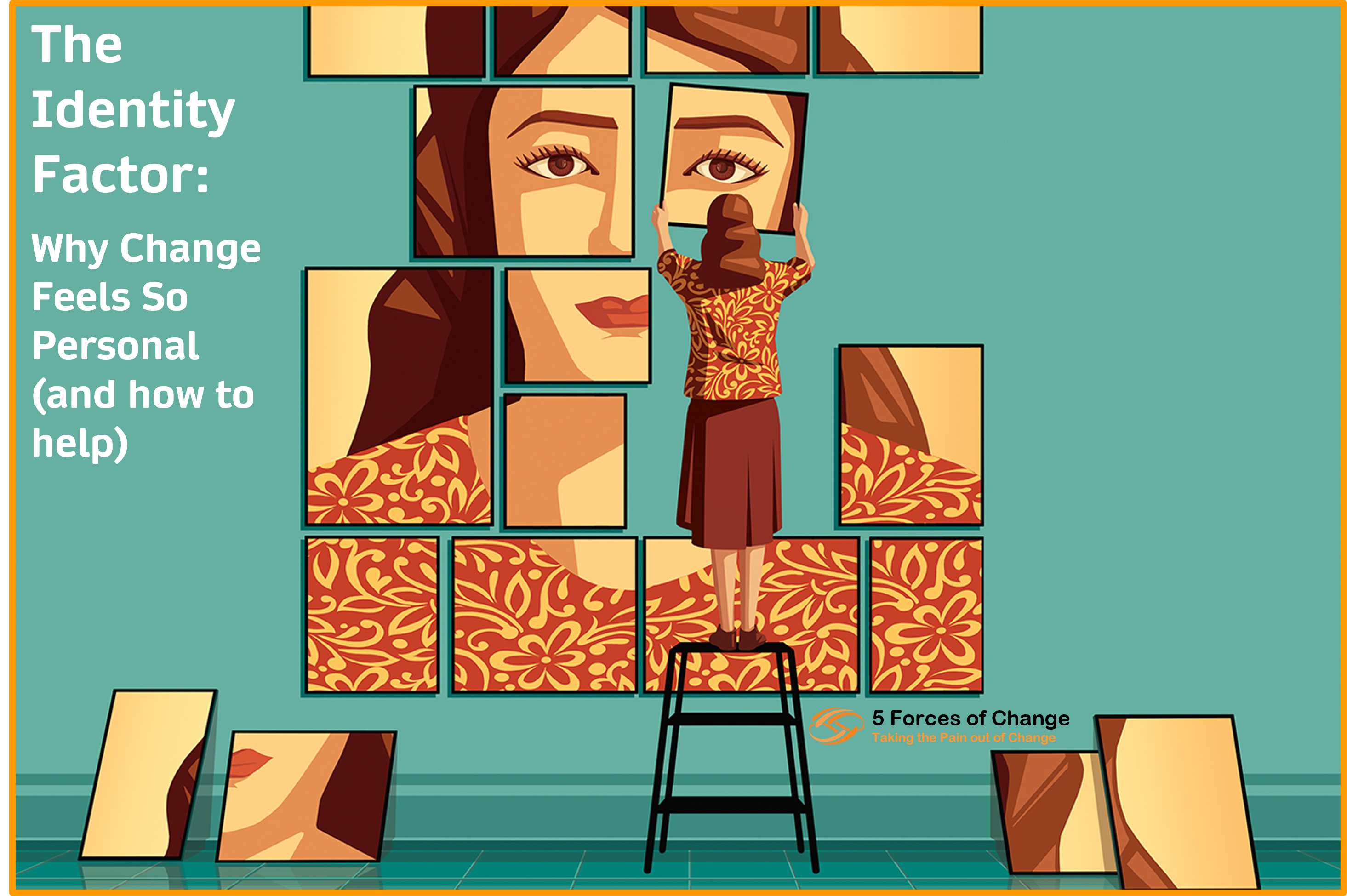It’s easy to think resistance to change is just about stubbornness. But a lot of the time it’s about something deeper: our identity.
Our sense of self is tightly wrapped up in how we do our jobs – the habits we’ve formed, the team dynamics, even the inside jokes that only make sense in our corner of the office. When change rolls in and starts shifting those familiar pieces, it can feel like a direct attack on who we are at work.
So, how can leaders support their teams through this?
How do we best address The Identity Factor in Change?
✨ Acknowledge the emotional side of change. Use the ‘Keep-Lose-Gain Grid’** to:
– Bring issues (like a sense of loss) into the open
– Explore together what’s going to stay the same – like the mission, the culture, the customers, the shared values
– Involve your team in planning to mitigate any sense of loss
Support new identities. Help people grow into new roles, nurture new teams and celebrate the journey.
Be mindful of symbols. Even logos, office spaces, or job titles carry emotional weight. Handle them with care and explain their evolution.
Change is hard – but it doesn’t have to be alienating. When we understand the role identity plays, we can lead with empathy, build trust, and create a culture that adapts and thrives.
What has helped you feel more grounded during a big change? How have you addressed the identity factor in change?
*See www.5forcesofchange.com/resources/books for details.
Note: People have a lot invested in the status quo, especially if they’ve been a part of the organisation a long time and help build the things that are about to change. Helping people adapt successfully to a new culture is vital for change to stick. Without this effort culture has a way of lingering and the organisation gets caught between two ways of being leading to long-term dysfunction and damage to performance and sustainability.
#Leadership #ChangeManagement #OrganizationalCulture #EmpathyAtWork #IdentityAndChange #transformationalleadership








